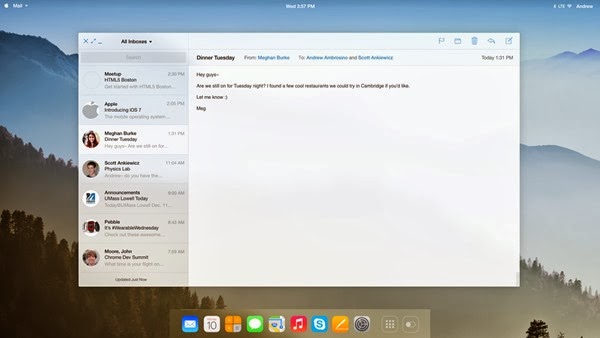Today the well known designer Andrew Ambrosino has just made a future look about what the OS X might look like. Introducing Andrew’s OS X 11 concept, which brings Apple’s desktop operating system in line with the flattened appearance of iOS 7…
Such an experience would start with a redesigned login screen reminiscent of the iOS 7 Lock screen, as depicted top of post.
I’m not entirely sure how logging in to my Mac by swiping would improve my experience. On the other hand, OS X for instance could detect my iOS device over Bluetooth to unlock my Mac directly from an iPhone or iPad device.
I do dig the flattened Mail application, seen below.
From Ambrosino’s blog:
A concept version of OS X inspired by iOS 7. Includes some good flatness, translucent blurs, and overall streamlining.
Now let us talk about the notification center in OS X: The current OS X Notification Center implementation is ripe for change, in my personal opinion. As you know, the Notification Center is invoked by swiping with your fingers from the right edge of your Mac notebook’s glass trackpad to the left, or using a customizable keystroke.
For an insight into how the Messages app would look like flattened, check out Ramotion’s awesome renderings. By the way, I’m loving the new status/menu bar with the current time in the middle, your menu bar items on the right and menus on the left.
What Apple should do for its next major OS X revision do you think?
Should they flatten the user interface, make it translucent and layered and bring even more features from iOS to the Mac? Or continue developing the two pieces of software separately of one another?
Knowing Apple’s penchant for uniformity and given Ive’s now in charge of all design (software and hardware) across the company, Andrew could be on to something here.
Besides, uniformity and consistency could go a long way toward lowering the psychological barrier of entry for people who are new to the Apple platform. iPhone users considering a Mac purchase would be more likely to adopt Apple’s computers if they could rely on their iOS muscle memory to operate the Mac, and vice versa.







